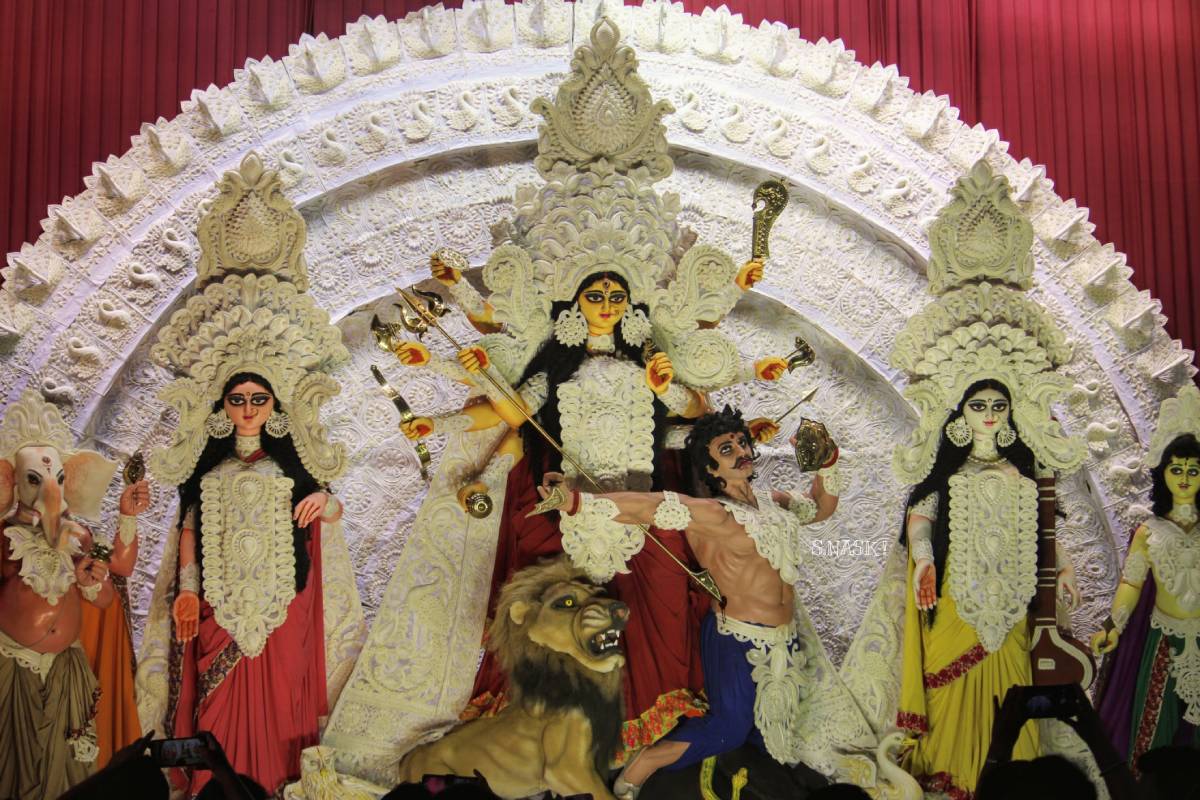Durga Puja is synonymous with Bengal, it is the very essence that completes its age old traditions. Durga Puja is celebrated with great fervor every year. Although theme pujo is in trend these days, but the traditional ways can never be replaced. It is a major point of debate if the ancient traditions would be completely replaced.
Here is a list of traditional Durga Puja rituals.
- Paata Pujo: This takes place on the day of Rathyatra. ‘Paata’ is the wooden base on which the Durga idol is made. The paata is worshipped and from that day the Durga idol making begins.
- Bodhan: This tradition goes back to the Ramayana. Since Rama invoked the goddess during the sleeping phase of Gods and Goddesses, every year, during Durga Puja Devi needs to be invoked. This act occurs on the sixth day of the festival (Sasthi) and is known as bodhan.
- Navapatrika Snan (also known as Kolabou Snan): This takes place on Saptami (the seventh day). Nine plants, namely, Brahmani (banana), Kalika (colacassia), Durga (turmeric), Kartiki (jayanti), Shiva (wood apple), Raktadantika (pomegranate), Sokrahita (ashoka), Chamunda (arum) and Lakshmi (paddy) are taken to the river for a bath. The nine plants represent nine forms of Nari Shakti (female power).
- Anjali or Pushpanjali: On the day of Ashtami (the eight day), flower offering is given to the Devi by all the devotees. On the other days of Puja, only the priest worships. So, anjali is of a great importance to the devotees.
- Kumari Pujo: Kumari Puja is performed on Ashtami too. A pre-pubescent girl is worshipped on the day as the living incarnation of Devi Durga.
- Sandhi Pujo: The Devi is worshipped on the junction of Ashtami and Navami. That particular puja is known as sandhi pujo. Earlier, animal sacrifices (balidaan) took place on this time. But now, vegetables are symbolically sacrificed.
- Dhunuchi Naach: Clay pots (known as dhunuchi) are filled with burning charcoals and people dance, holding the pots to the beat of the dhaak (a drum-like instrument). This happens on the ninth day (Navami).
- Sindur Khela: Married women smear sindoor (vermillion) on the idols and then on each other on Dashami (the tenth day). This is known as sindoor khela.
